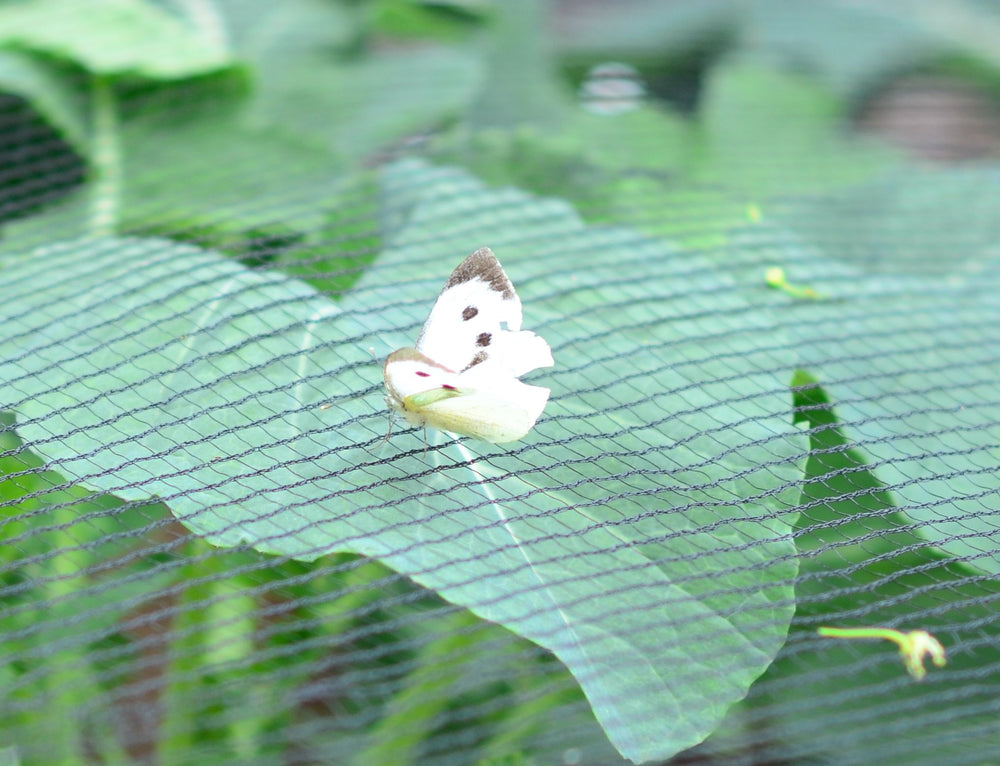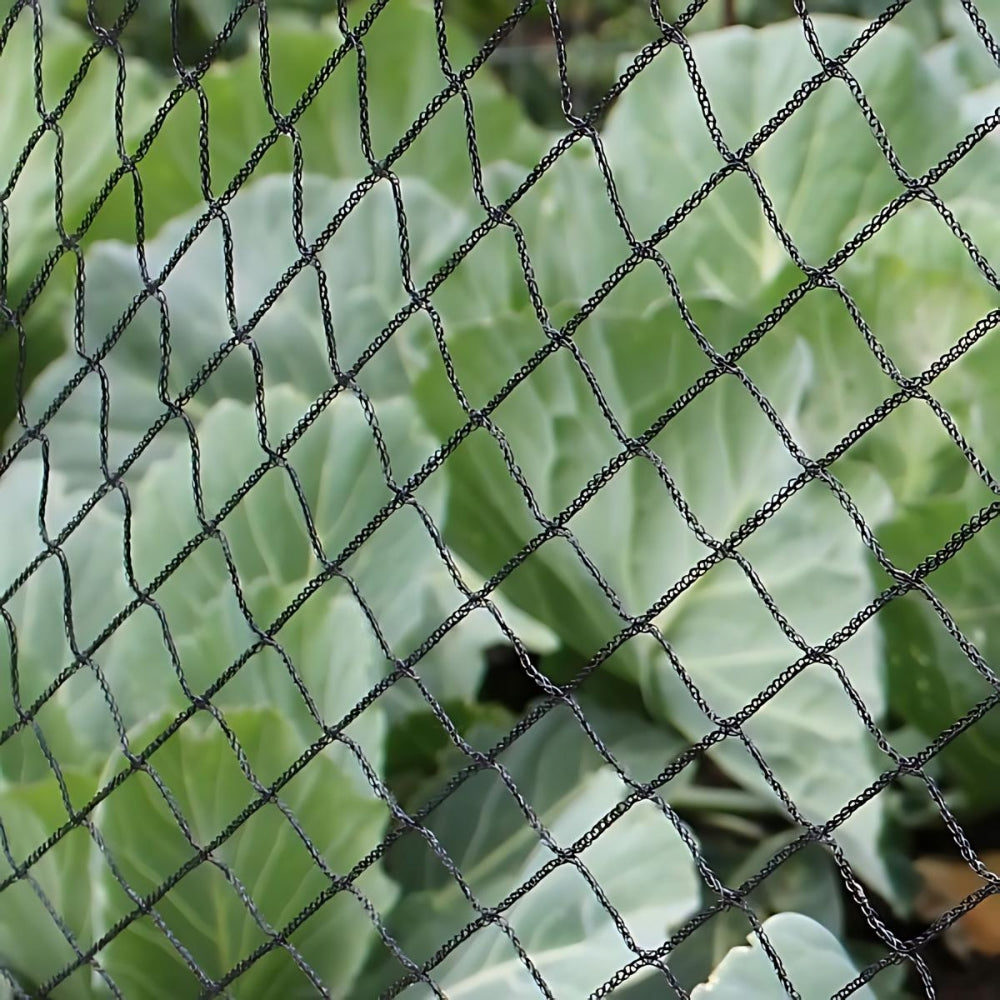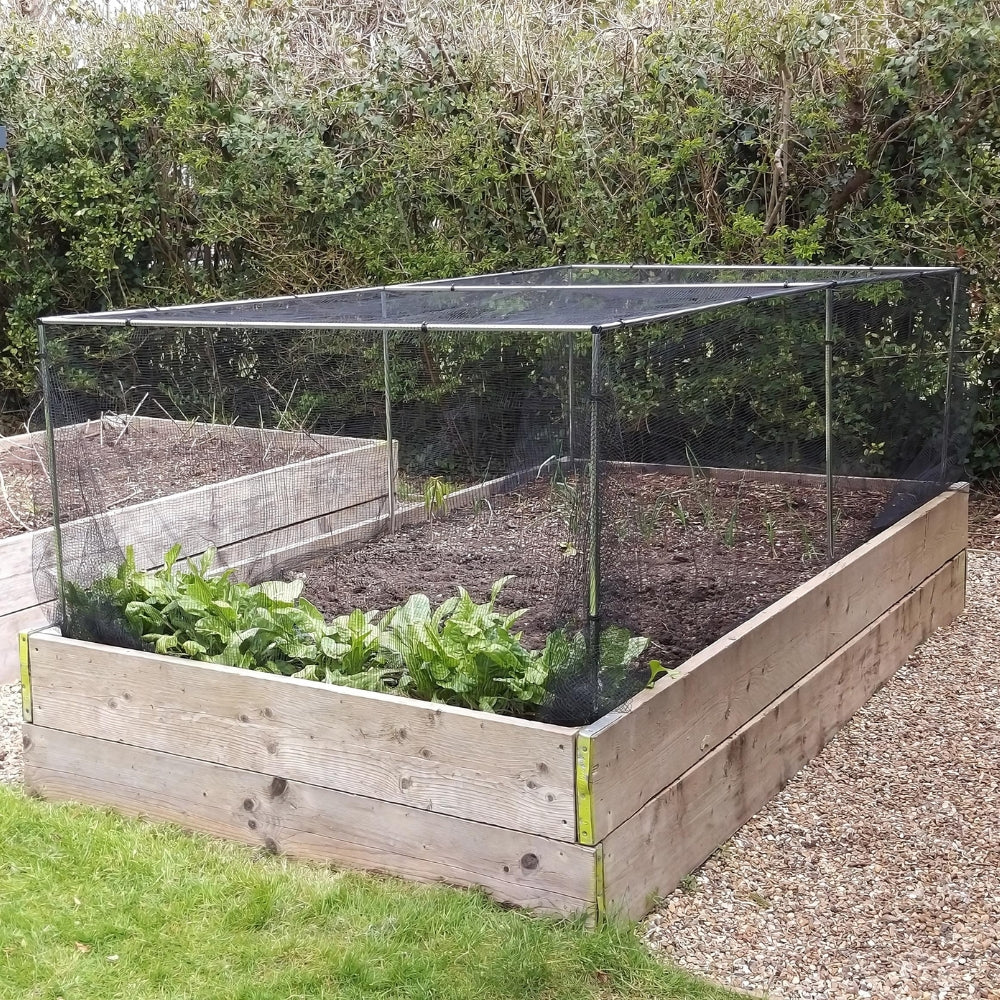Garden netting is essential for protecting crops from birds, insects, and harsh weather—but without proper anchoring, wind can tear it loose. Whether you’re growing on an allotment, in raised beds, or using a tunnel system, here’s how to secure your garden netting to stay put even in strong gusts.
Best Garden Netting for Windy Conditions
Start by choosing a netting that’s built to withstand the elements. UV-stabilised garden netting with reinforced edging is more resistant to tearing and won’t sag as easily under tension. Heavier insect mesh and bird netting perform better in exposed gardens than lightweight alternatives.
If you’re unsure what type suits your needs, our full garden netting range includes mesh for tunnels, hoops, and crop protection in windy conditions.
How to Stop Wind Blowing Away Garden Netting
A few stones or bricks won’t do much when the wind picks up. For real hold, secure the edges using heavy-duty garden pegs designed for firm or compacted soil. These pegs stay in place and won’t lift easily.
If you're using hoops or tunnel kits, attach the netting to the frame with crop cover clips. They grip the netting tightly and prevent it from slipping off in strong gusts. You should also peg the sides down every 50–60cm, not just the corners, to avoid flapping or lifting.
How to Keep Garden Netting Tightly Secured
The key to windproofing is tension. Pull the netting tightly across your crops and anchor it along all edges. Overlapping the edges by 15–30cm gives more room for secure pegging.
To pin it in place, use U-shaped garden pins along the sides. These are reusable, easy to insert, and especially helpful when you need to lift the netting regularly for weeding or harvesting.
Securing Garden Tunnels and Hoops
If you’re working with aluminium hoops or tunnel kits, start by stretching your netting over the framework with no slack. Then fasten it using crop cover clips. Peg the netting into the ground at regular intervals to seal the base and stop wind getting underneath.
This setup is ideal for protecting crops from both pests and unpredictable weather while keeping ventilation steady.
By choosing strong materials and anchoring them properly, you’ll protect your plants and reduce the chance of weather damage. For all the kit mentioned above—including pegs, clips, and netting—visit our garden netting accessories collection.














